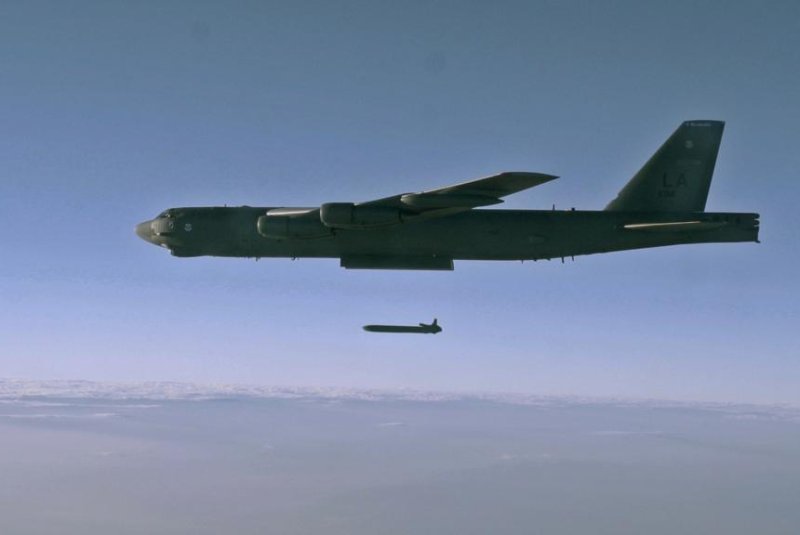The Army is investigating a new synthesized material for use in propellants and explosives for rockets and guns. Pictured, an unarmed AGM-86B Air-Launched Cruise Missile is released from a B-52H Stratofortress over the Utah Test and Training Range during a Nuclear Weapons System Evaluation Program sortie Sept. 22, 2014. U.S. Air Force photo by Staff Sgt. Roidan Carlson
ABERDEEN PROVING GROUNDS, Md., May 9 (UPI) -- Scientists at the Army Research Laboratory are investigating new energetic materials for potential use with weaponry.
The material being looked at is bis-isoxazole tetranitrate, or BITN, a synthesized material, and its derivatives, the Army reported.
"BITN has a strong potential for improving insensitive munitions characteristics for gun and rocket propellants" said Dr. Jesse J. Sabatini, team leader of the Energetics Synthesis Team within ARL's Weapons and Materials Research Directorate.
Insensitive munitions are chemically stable and can withstand mechanical shocks, fire and impact by shrapnel yet still explode as intended. Under the Joint Insensitive Munitions Technology Program efforts are being made to improve response to several scenarios, such as slow cook-off, bullet and fragment impact.
The aim of the scientists' work is to develop even denser, higher-performing energetic ingredients for propellant and explosive applications, and they are experimenting with BITN derivatives. The work is being performed in consultation with the U.S. Army Aviation and Missile Research, Development and Engineering Center at Redstone Arsenal, Ala.
"There is an ever-increasing need for the development of new energetic materials for explosive applications," Sabitini said in a recent paper co-written with Dr. Karl D. Oyler, from the U.S. Army Armament Research, Development and Engineering Center at Picatinny Arsenal, N.J. "This includes, but is not limited to, the area of primary explosives and secondary high explosives.
"It will be interesting to follow its progress in future years, as many of these ingredients move past the basic research area, and progress into an applied research setting to be investigated in various formulations."















